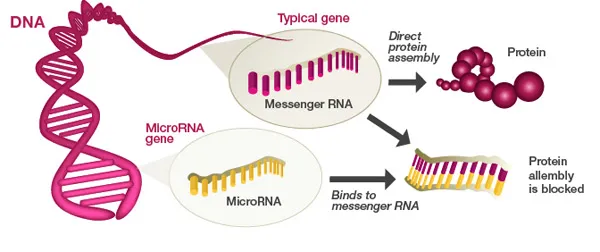A common diabetes feature is the death of insulin producing cells, beta-pancreatic cells.Different mechanisms-inflammation, DNA damage, oxidative stress-have been related to the death of beta-pancreatic cells, however, at the molecular level, this process has not been described in depth.
A recent study led by the Swiss Institute of Technology has just revealed that the Mi-20000 Microarns family actively intervenes in the metabolism and regulation of the apoptosis of beta-pancreatic cells.Specifically, the mass production of the microarns of said family induces the death of insulin producing cells.
Previous studies had shown since the members of the MIR-200 family are expressed in beta-pancreatic cells, and that contribute to their apoptosis in response to oxidative stress.However, there was no evidence of their role in vivo.Through different genetic and pharmacological models in mouse, researchers found that the expression of the MIR-200 family rises in the insulin producing cells of diabetic animals.And what is more, its overexpression induces the death of beta-pancreatic cells, as well as the appearance of type 2 diabetes. Confirming these results, the elimination of the MIR-200 reduces the apoptosis of the insulin and improvement producing cells and improvementThe symptoms of diabetes.
The group of researchers, led by Markus Stoffel, had already recently identified various microarns related to the function of beta-pancreatic cells: a family of microarns necessary for the division of this cell type in response to the need for insulin, and another involvedin the amount of insulin that occurs."Now we have established that a third family, MIR-200 is responsible for the life and death of beta cells," says Stoffel.
The microarn are small non -coding RNA molecules, that is, Arn that is not translated into proteins, whose participation in biological processes has only begun to be revealed.Divided into families according to their sequence or structure, these molecules regulate the expression of genes involved in the immune system, neurodegenerative diseases, embryonic development and cancer among others.The identification of the role of the MIR-200 family in the appearance of diabetes, as well as the molecular route in which it participates, not only expands the number of processes involved by microarns, but also offers a pharmacological route for treatmentof diabetes.The inhibition of the activity of the MIR-200, the researchers conclude, could become a potential pharmacological strategy to promote the survival of beta-pestic cells.
Reference: Belgardt BF, et al.The Micrrorna-200 Family Regulates Pancreatic Beta Cell Survival in Type 2 Diabetes.Nat Med. 2015 May 18. Doi: 10.1038/Nm.3862.
Source: Link


